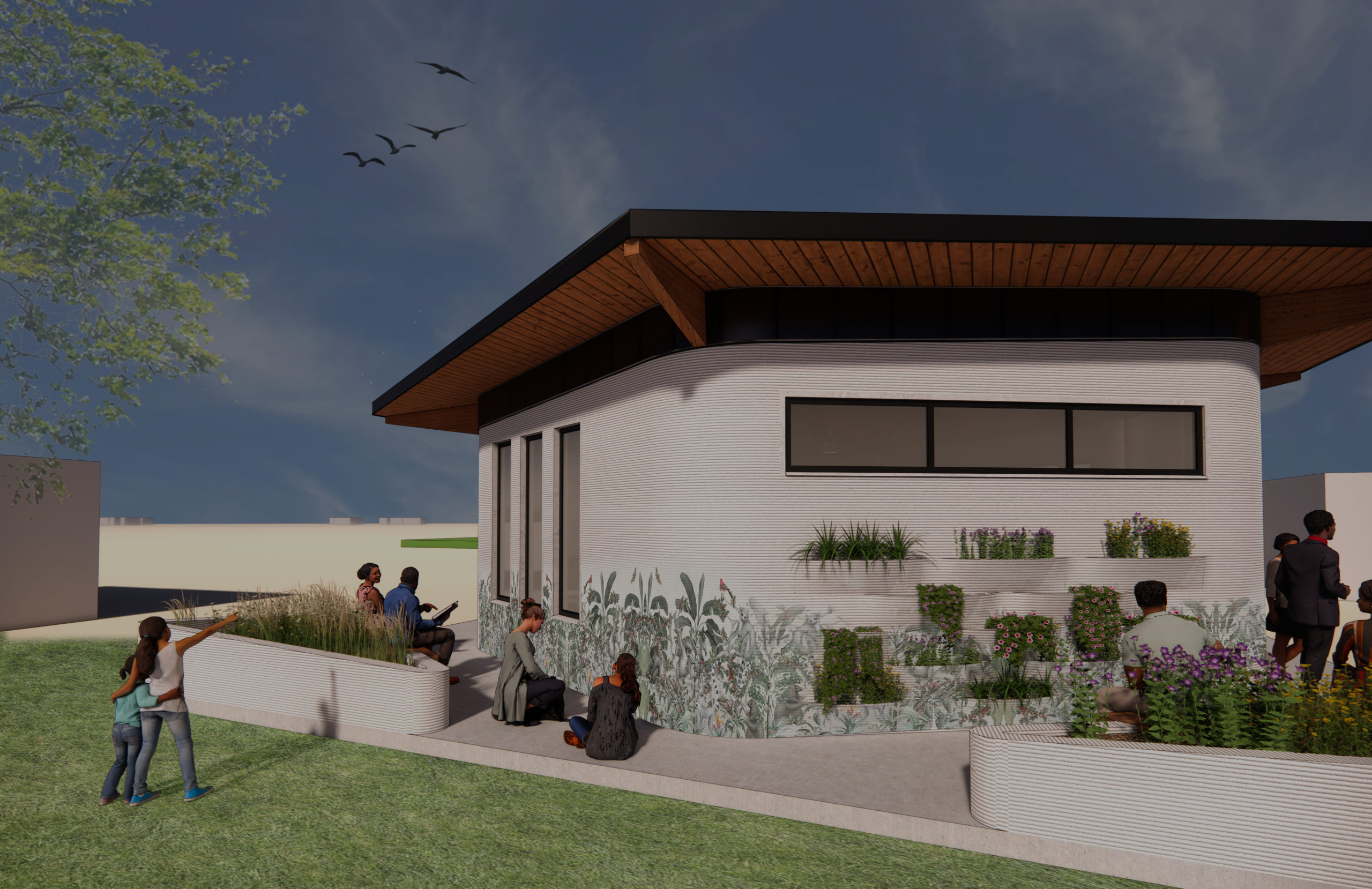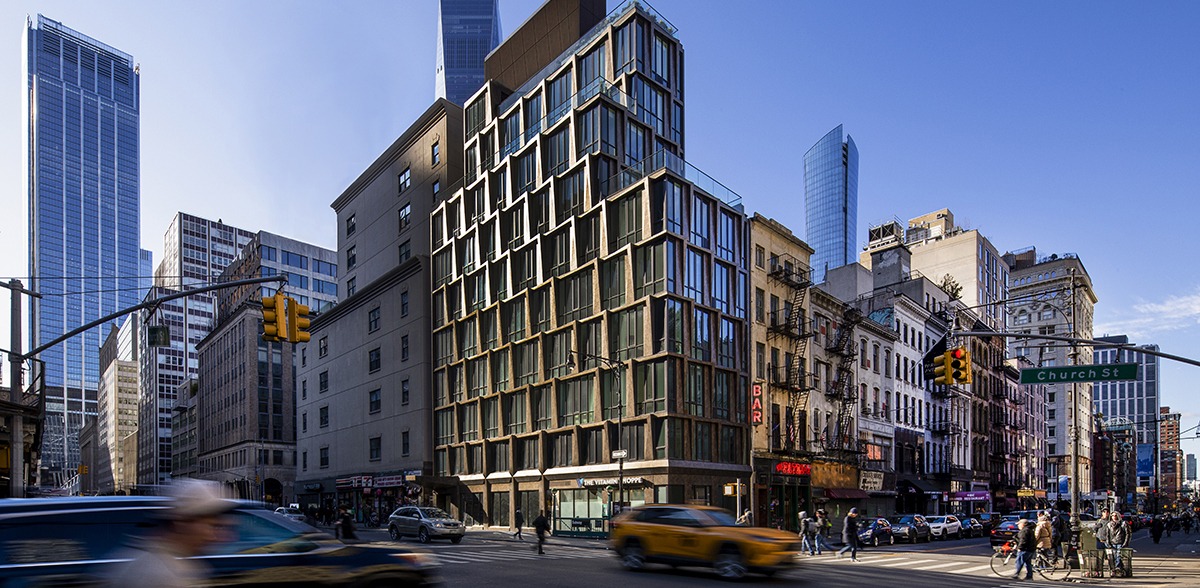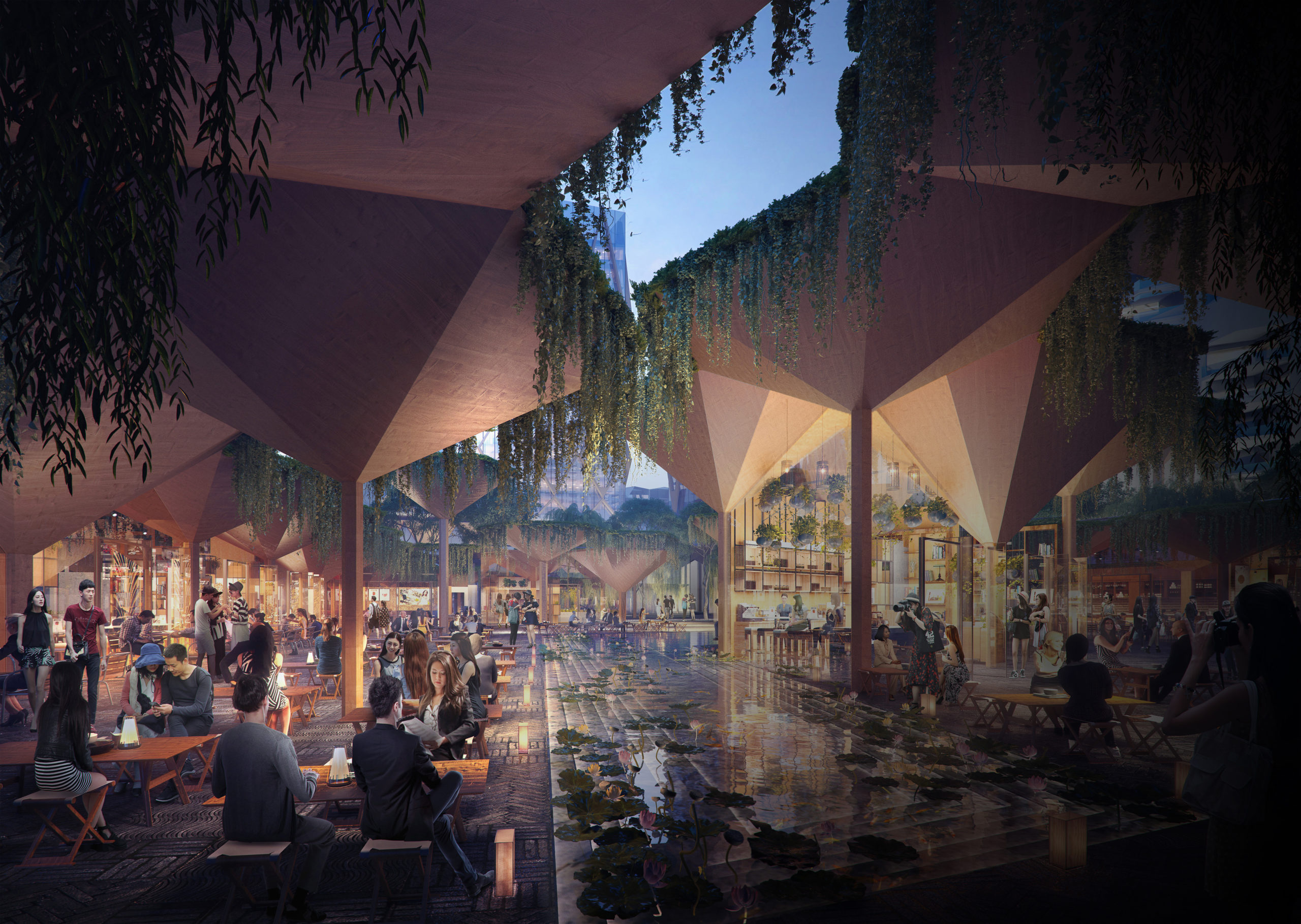Do you have a project that uses innovative construction methods or unlocks new ways to build? Consider entering the brand new Architecture +Experimental Design or Architecture +New Technology categories in Architizer’s 10th Annual A+Awards.
Six years ago, when she was a sophomore in highschool, Maggie Grout approached her father to voice a frustration. Given the advanced technology that we have today, why weren’t more technological innovations humanitarian-driven?
Fast forward six years and Maggie’s established non-profit, Thinking Huts, is breaking ground on their highly anticipated 3D printed school in Madagascar. With a focus on education in Sub-Saharan Africa, where over 50% of youth aren’t in school, her organization is harnessing 3D printing to make a difference in an area of the world that most designers overlook. The impact will be resounding — and replicable across the continent.
There are 34 million out-of-school children in sub-Saharan Africa; many remain uneducated simply by virtue of the fact that the nearest education centers require long, dangerous walks of up to 9 miles. While traditional construction methods take months or even years, Thinking Huts’ stroke of genius is a hybrid design that combines 3D printed walls with locally sourced materials. The former decreases construction time from months to days, and the latter reduces the buildings’ carbon footprint by using less concrete than other methods, as well as emitting less carbon dioxide compared to traditional concrete. Taking a beehive as inspiration, the design anticipates the attachment of additional schools as the community grows.
Thinking Huts positions architecture as the nexus of social justice, technological innovation, and models for sustainable growth aimed at breaking the cycle of poverty in some of the world’s remote regions. In the following article, Maggie Grout discusses the collaborations with designers and technology partners that have helped to make her dream a reality, as well as the need for more awareness about humanitarian-driven design.
Hannah Feniak: You started this journey as a 15-year-old with a strong desire to harness technology as a tool to break the cycle of poverty through education. Was it always obvious that you wanted to take an architecturally-oriented problem-solving approach?
Maggie Grout: I would say largely so, from a young age I was fascinated by Egyptian and Greek culture and history — particularly their ability to build and preserve civilization through symbolism. I knew that to create generational change, a solution would need to be built. It is incredibly exciting that the work I get to do is a combination of architectural design, technology and social entrepreneurship.
You soon recognized the potential of 3-D printing to realize your goals. What were the first steps you took to make your dream a reality?
I started researching companies who were building architectural-scale 3D printers and thinking ahead for how to implement the first school as the technology continued to develop. I also began reaching out to grassroots nonprofits in countries including Indonesia, Tanzania, Madagascar to see if this solution would be needed and accepted as an alternative to existing construction methods. I found that the education crisis is massive and the need for schools was a piece in that larger puzzle. I was eventually led to Madagascar and connected to Ella, who manages our Madagascar team and has since become a great friend of mine. I knew we needed to begin where not only the need was great, but we also had local support.
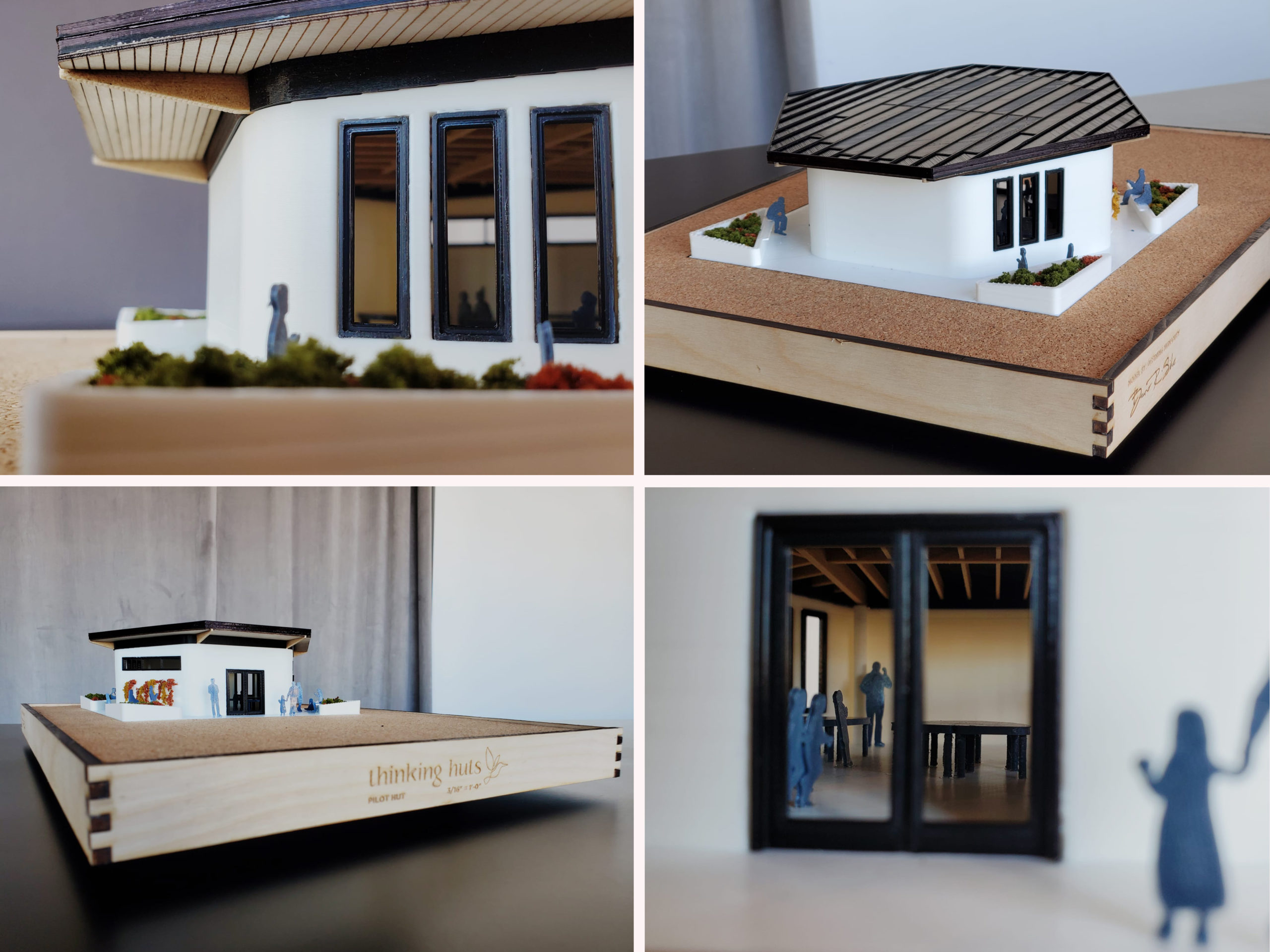
Models of the 3D printed schools courtesy of Thinking Huts
At what point did you bring in your architectural designer, Defining Humanity, and can you describe the collaboration process?
After the conceptual renderings, Bruno and Yash from Defining Humanity joined our team to bring the vision from idea to reality. They understood and respected my vision of creating a beautiful beehive-inspired design that is cost-efficient and scalable, while maintaining integrity with respect to local culture. I look forward to working with them to adapt future Hut designs with each community’s feedback as we continue building schools.
Can you tell us a little more about your Malawi-based technology partner, 14Trees? How did you first connect with them?
I first connected with 14Trees in February after discovering they were already working within East Africa and had built 3D printed houses in Malawi. I believed that joining forces with their experience in 3D construction would best position us for a successful pilot in Madagascar. They also align with our values of empowerment and innovation by supporting local workers and creating jobs to support economies.
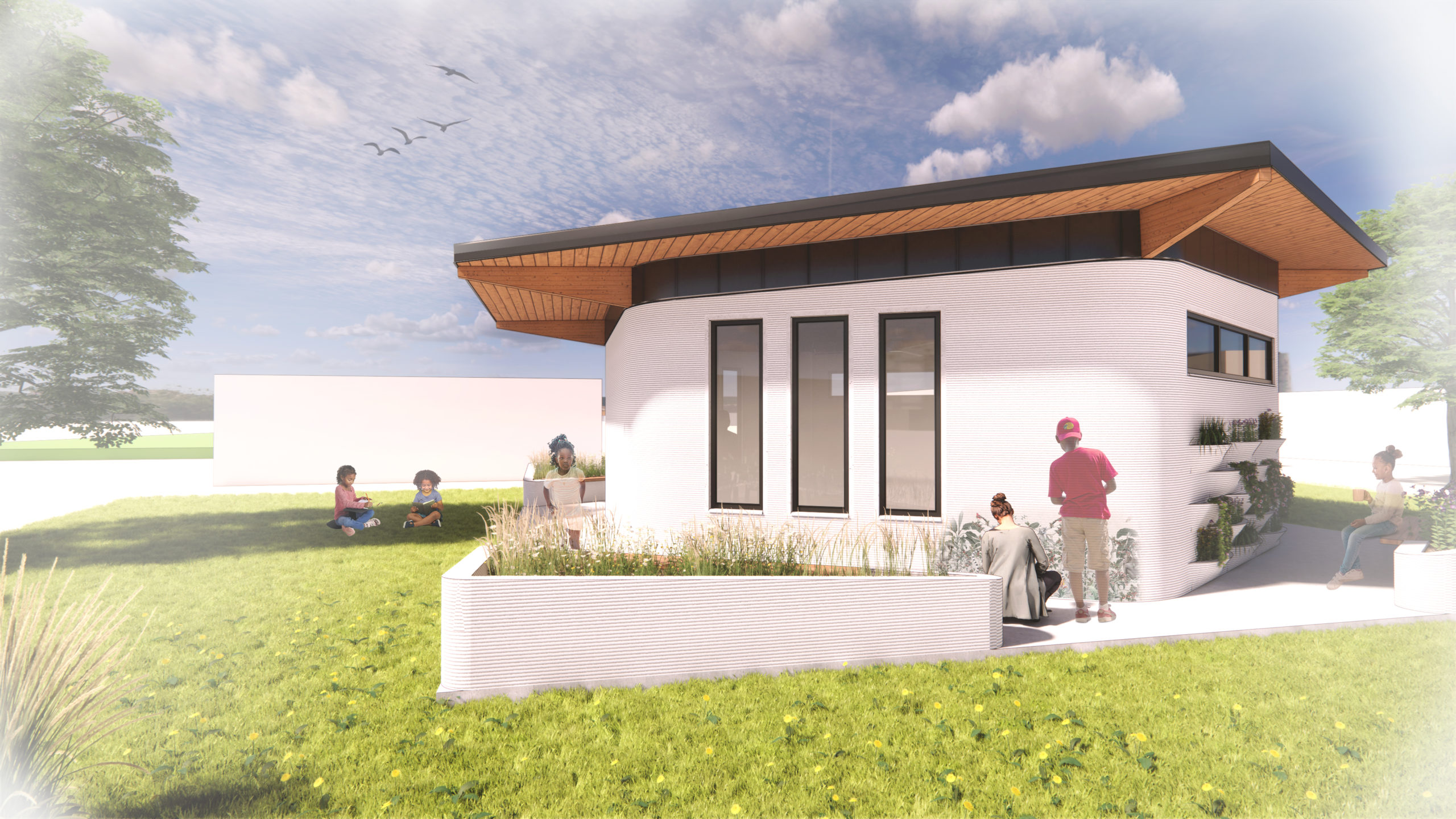
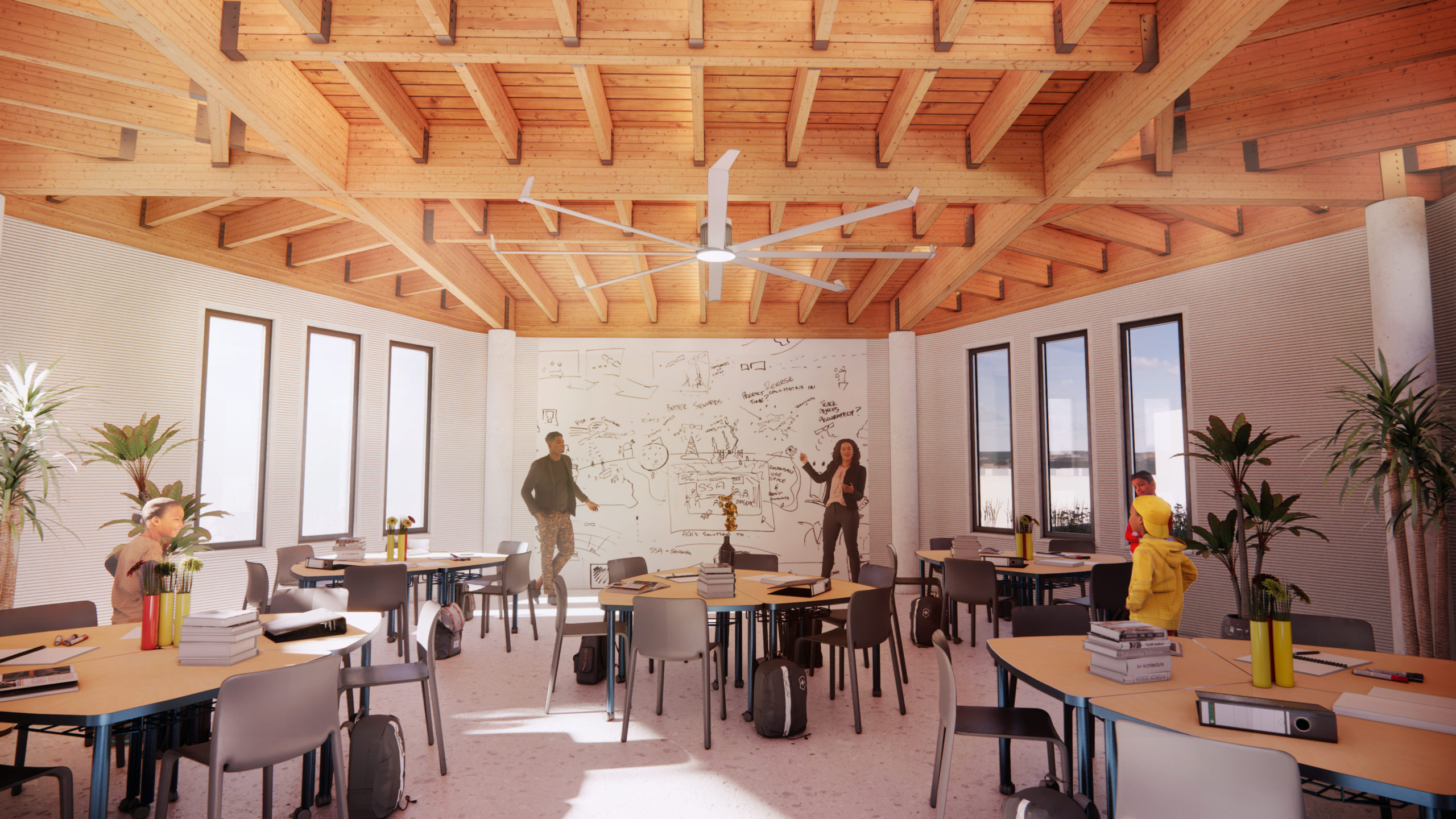
Renderings of the exterior and interior courtesty of Thinking Huts
Thinking Huts uses a unique cement mixture that emits less CO2 compared to traditional concrete. How did your team land on this material, and can you speak a little more about it?
The cement mixture is proprietary and made for the use of a COBOD printer. According to 14Trees, it can reduce carbon emissions related to construction by up to 70%. Soil-based mixtures are still in the early stages of development, but I look forward to when 3D printing technology can utilize more environmentally friendly materials.
Beyond immediate local impact in Sub-Saharan African communities, in what ways do you hope that Thinking Huts — as a non-profit model that harnesses architecture for social justice — will impact the broader global architectural, engineering and construction industry (AEC)?
I hope that Thinking Huts will inspire people around the world to tackle projects and start businesses aimed at social impact. I often think we exist in a world that places more value on the bottom line, but I believe that if given the chance, more people will be enabled to envision a new world that creates opportunities for others and thinks of the collateral impacts of our actions. It is possible to lead a fulfilling life and make a large scale impact with a nonprofit model. The world needs more architects, engineers, designers, and builders who will focus their talents and energies towards addressing the pressing needs around us.
Thinking Huts is currently seeking corporate and individual contributions, as well as volunteers with an interest in education or technology to help achieve its ambitious goals. Find out more at thinkinghuts.org or contact team@thinkinghuts.org to schedule an interview.
Do you have a project that address crises in collaboration with communities, bringing vital hope to those in need? Consider entering the Architecture +Collaboration, Architecture +Community, or Architecture +For Good categories in Architizer’s 10th Annual A+Awards.
